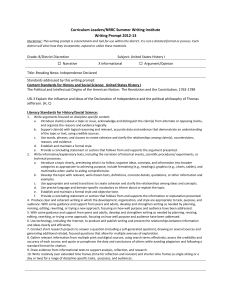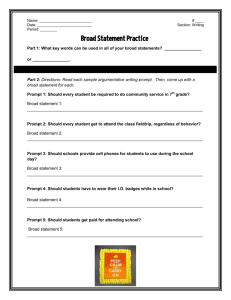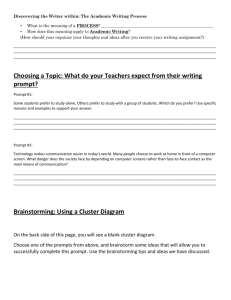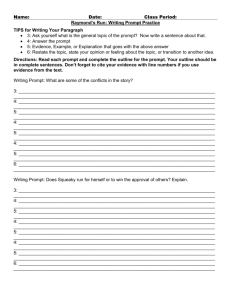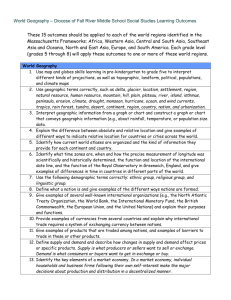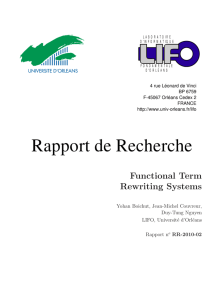Curriculum Leaders/NRRC Summer Writing Institute Writing Prompt
advertisement
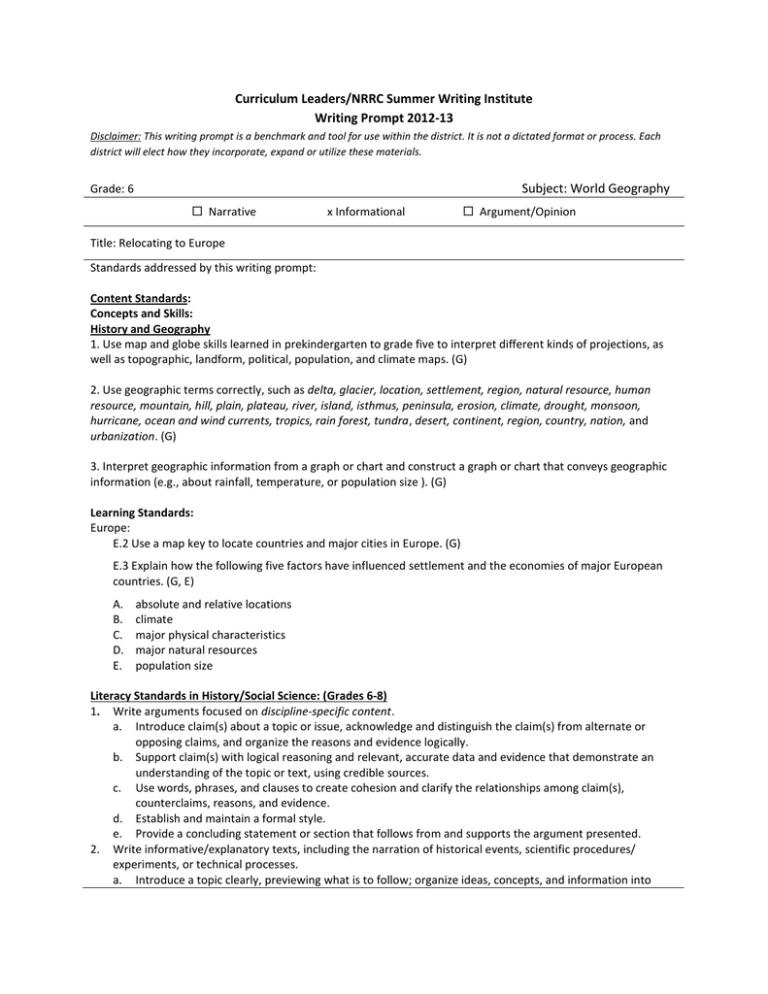
Curriculum Leaders/NRRC Summer Writing Institute Writing Prompt 2012-13 Disclaimer: This writing prompt is a benchmark and tool for use within the district. It is not a dictated format or process. Each district will elect how they incorporate, expand or utilize these materials. Subject: World Geography Grade: 6 Narrative x Informational Argument/Opinion Title: Relocating to Europe Standards addressed by this writing prompt: Content Standards: Concepts and Skills: History and Geography 1. Use map and globe skills learned in prekindergarten to grade five to interpret different kinds of projections, as well as topographic, landform, political, population, and climate maps. (G) 2. Use geographic terms correctly, such as delta, glacier, location, settlement, region, natural resource, human resource, mountain, hill, plain, plateau, river, island, isthmus, peninsula, erosion, climate, drought, monsoon, hurricane, ocean and wind currents, tropics, rain forest, tundra, desert, continent, region, country, nation, and urbanization. (G) 3. Interpret geographic information from a graph or chart and construct a graph or chart that conveys geographic information (e.g., about rainfall, temperature, or population size ). (G) Learning Standards: Europe: E.2 Use a map key to locate countries and major cities in Europe. (G) E.3 Explain how the following five factors have influenced settlement and the economies of major European countries. (G, E) A. B. C. D. E. absolute and relative locations climate major physical characteristics major natural resources population size Literacy Standards in History/Social Science: (Grades 6-8) 1. Write arguments focused on discipline-specific content. a. Introduce claim(s) about a topic or issue, acknowledge and distinguish the claim(s) from alternate or opposing claims, and organize the reasons and evidence logically. b. Support claim(s) with logical reasoning and relevant, accurate data and evidence that demonstrate an understanding of the topic or text, using credible sources. c. Use words, phrases, and clauses to create cohesion and clarify the relationships among claim(s), counterclaims, reasons, and evidence. d. Establish and maintain a formal style. e. Provide a concluding statement or section that follows from and supports the argument presented. 2. Write informative/explanatory texts, including the narration of historical events, scientific procedures/ experiments, or technical processes. a. Introduce a topic clearly, previewing what is to follow; organize ideas, concepts, and information into broader categories as appropriate to achieving purpose; include formatting (e.g., headings), graphics (e.g., charts, tables), and multimedia when useful to aiding comprehension. b. Develop the topic with relevant, well-chosen facts, definitions, concrete details, quotations, or other information and examples. c. Use appropriate and varied transitions to create cohesion and clarify the relationships among ideas and concepts. d. Use precise language and domain-specific vocabulary to inform about or explain the topic. e. Establish and maintain a formal style and objective tone. f. Provide a concluding statement or section that follows from and supports the information or explanation presented. 4. Produce clear and coherent writing in which the development, organization, and style are appropriate to task, purpose, and audience. With some guidance and support from peers and adults, develop and strengthen writing as needed by planning, revising, editing, rewriting, or trying a new approach, focusing on how well purpose and audience have been addressed. 5. With some guidance and support from peers and adults, develop and strengthen writing as needed by planning, revising, editing, rewriting, or trying a new approach, focusing on how well purpose and audience have been addressed. 6. Use technology, including the Internet, to produce and publish writing and present the relationships between information and ideas clearly and efficiently. 7. Conduct short research projects to answer a question (including a self-generated question), drawing on several sources and generating additional related, focused questions that allow for multiple avenues of exploration. 8. Gather relevant information from multiple print and digital sources, using search terms effectively; assess the credibility and accuracy of each source; and quote or paraphrase the data and conclusions of others while avoiding plagiarism and following a standard format for citation. 9. Draw evidence from informational texts to support analysis, reflection, and research. 10. Write routinely over extended time frames (time for reflection and revision) and shorter time frames (a single sitting or a day or two) for a range of discipline-specific tasks, purposes, and audiences. Related Content/Topic Component: Maps: 1. 2. 3. 4. Physical Map of Europe Natural Resource Map of Europe Population Map of Europe Climate Map of Europe Graphic Organizer Writing Prompt: You and your family are moving to a city in Europe. Using the maps provided, select a city you and your family will be happy living in. Write a response that provides two specific details from each map, giving evidence that this city is the best choice for you and your family. Suggested Administration: This assignment will be completed at the end of the unit on Europe. Students need to be able to read and interpret maps, and have basic information about the continent of Europe. *Teachers may want to limit the number of countries to accommodate students’ needs. TEAM MEMBERS: Judith Fuller, Laurie Martines, Zachary Ritland, Lindsay Hoffman Name Period Graphic Organizer-Relocating to Europe Opening Sentence: Specific Detail 1 Map 1 Physical Map Map 2 Climate Map Map 3 Population Map Map 4 Natural Resources Map Conclusion: Specific Detail 2 http://printable-maps.blogspot.com/2008/09/map-of-climate-zones-in-europe.html http://tedsonline.co.uk/shop/index.php?main_page=product_info&products_id=231
